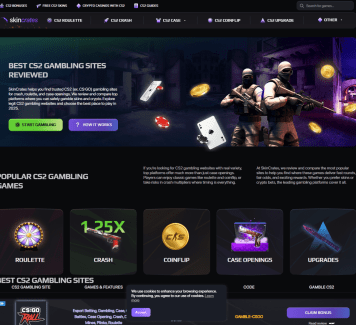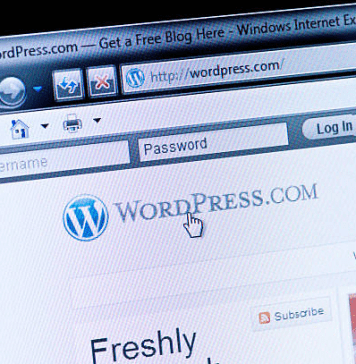
In today’s digital marketplace, customers can be found everywhere, and thus, businesses must disseminate across channels and screens. From websites to apps to social media feeds to digital signage to the Internet of Things, companies need a unified message; yet creating such a presence takes time and effort across the board. A regular CMS makes it challenging to reuse content because businesses will need to tweak the various iterations to make each one successful. This means that the same content could end up in different formats over time as businesses forget to reaccess the original across the other platforms.
Decoupling Content from Presentation for Greater Flexibility
One of the biggest failures of the traditional CMS world is its content and display tightly integrated nature. With a traditional CMS, content and display are one in the same and reside in templates created for one company and one site. To take that same content and have it used in a mobile app, on social media, or any other digital experience requires time to recreate and remap manually.
With a headless CMS, this is no longer the case. A headless CMS creates a separation between content and presentation layer. Content is created and stored in a repository with less of an understanding of its situational use, meaning it is dispersed for potential future use across many applications such as social media and monetization opportunities. This approach aligns perfectly with a digital content strategy, allowing teams to efficiently manage, reuse, and distribute content at scale. With a headless CMS, companies can plug into APIs to render content across various platforms without having to worry about recreating the wheel every time.
In fact, the same article, blog post, product description, and video can automatically be reformatted and resized for different devices and screens without a worry for duplicated content. For example, a news company can write an article once in a headless CMS and seamlessly distribute it to its website, mobile news app, smart speaker, and social media timelines. When presentation is divorced from content, companies can effectively give the best content experience for any audience, no matter where they receive it from.
Automating Content Distribution Across Digital Channels
Content distribution is one of the most time-consuming tasks for content teams, especially cross-digital platform efforts. Using a traditional CMS, content teams will need to take certain pieces of content, cut and copy, reformat, upload other media assets across each platform, making for highly inefficient operations to avoid mistakes and inconsistencies.
Content distribution is simpler with a headless CMS. Since content is delivered via APIs as needed, when content is created it can be delivered to multiple digital platforms from one source there’s no need to overhaul the same content in different places to ensure different formatting. A headless CMS allows for all platforms to have the best and most recent content without any extra effort.
For example, a content team working for a retail business can create an online shopping platform through a headless CMS.
When that content team needs to update a product description or marketing ad, they simply need to update it in the original setting for the e-commerce site and it auto-populates on the accompanying in-app shopping experience, the in-store digital displays, and the whole email blast list for coupon distribution. Everything gets sent to everywhere else so that content teams have less to do but save time and redundancy while making sure every single consumer engagement opportunity is aligned with the new, updated information.
Enhancing Content Personalization for Different Audiences
Different channels appeal to different target demographics and therefore, content must reflect such. Where social media demands punchy content, websites require explanatory text and mobile devices offer the opportunity for quick, captivating bursts of information. A traditional, legacy CMS adds a layer of difficulty to being able to generate content by channel without duplicating the content or making adjustments on the version of content that’s not meant to be seen.
A headless CMS allows for easy content differentiation because content creators can library similar content pieces separately and pull them together dynamically based on demographic need and channel requirement. Thus, it’s easier to create channel versions without having to duplicate the original work, either.
For instance, a restaurant/café can create a 50-paragraph feature article on the best coffee shops in the world for its website but simultaneously and automatically generate a TikTok coffee recipe video transcription, Alexa coffee shortcut summary, and Facebook group coffee shop announcement because the headless CMS will create a matching version without channel engagement standards.
Centralizing Content Management for Consistency and Efficiency
Using legacy CMS platforms to push content to different channels creates siloed operations as different teams champion different versions of the same content. This can cause branding discrepancies, tonal differences, and mixed messages should certain assets fail to be updated everywhere they’re found across channels and platforms.
A headless CMS champions a more unified approach to content management as everything exists in one database and all-access implementations pull from one source. There’s no need to update in different spots; the update happens automatically wherever CMS assets and information are deployed or transferred. This fosters branding integrity and ensures that no out-of-date or contradictory assets exist in different locations.
For example, a multinational enterprise can utilize a headless CMS to make sure that its legal disclaimers, corporate press releases, and product specifications are the same across all domestic and international versions of the enterprise, all mobile applications, and all third-party integrations. This minimizes the risk of confusion and gives all audiences the ability to rely on correct, up-to-date information.
Streamlining Content Localization for Global Audiences
For enterprises that operate globally, content localization is necessary to appeal to non-English speaking audiences. Traditional content management systems require enterprises to generate and manage different versions of the same content in different languages and different countries manually, which makes the process of content localization inefficient and challenging.
Yet a headless CMS simplifies content localization through automatic translation, regional variances of content, and systems that understand where a user is in order to deliver appropriate content. Enterprises can create entries of one piece of content and have it automatically transformed into multiple languages that appear as though they are culturally sensitive and transformed to speak to the individual enterprise.
For example, a travel booking enterprise with a headless CMS can upload a content piece for a new excursion in English. The headless CMS can create Spanish versions, French versions, Chinese versions, and Italian versions, distributing them to localized websites, regional apps, and marketing efforts. This reduces the need for manual translation, increases the speed in which content can go live, and keeps the localized piece in line with what the enterprise wants to say in general.
Improving Omnichannel Marketing with Unified Content
Omnichannel marketing means brands must create a seamless customer journey across multiple digital touchpoints via the brand’s website, social media outlets, mobile apps, IoT, and AI chatbots. A traditional CMS limits the potential of omnichannel marketing because it necessitates that content be formatted and adjusted per channel, which results in disjointed experiences and inconsistent messaging.
A headless CMS allows for the possibility of omnichannel marketing because brands can manage and curate the content from one backend location but disperse it across channels in real time, as needed, effortlessly. Marketers can create one piece of content, for example, an omnichannel campaign for a recent product, and ensure the messaging remains the same from email blasts to social posts to paid social campaigns to website advertisements.
For example, an athletic apparel brand launching a new sneaker line can seamlessly use a headless CMS to debut its blog articles, promotional videos, e-catalogs, and social media influence with brand partnerships simultaneously across all marketing avenues. This creates a cohesive brand message for maximum customer engagement and awareness across various audience segments.
Future-Proofing Content Strategies with Scalable Architecture
As digital experiences continue to proliferate, brands need a solution for nimble cross-channel, cross-platform, and cross-device content strategy. The concern with a standard CMS is that it’s not scalable; CMS offerings are either web-based for web-related opportunities, and they trap your content into one use as opposed to offering it to be used across various devices or for various formats.
A headless CMS allows brands to establish a content strategy for the future by allowing repurposing from day one to any purpose down the line—which means if a brand isn’t sure how it’s going to want to present its content, it can publish in a headless format and let it be accessed via AR or VR or the voices of tomorrow through smart speakers.
For instance, an eCommerce shop may be focused on the web experience; however, by using a headless CMS, it can integrate a point-of-sale/Kiosk experience down the line without disrupting content workflows. It also allows for the inclusion of channels that may not even exist yet.
Conclusion
A headless CMS encourages content regeneration because it is a centralized solution for a business to house, create, and disseminate content across multiple channels. The separation of content from presentation, automatic distribution, micro-management, and targeted personalization ensure that the business gets what it needs out of stable and repetitive digital content across all digital channels and points of contact.
Similarly, the ability to localize, update in real-time, and reap the benefits of an omnichannel marketing approach allows businesses to engage with what they’ve already created and instead use it for its intended purpose instead of creating more redundancy. Headless CMSs encourage a lower per capita cost of content duplicating operations and imply that as technology continues to grow, content management solutions can truly be scalable for businesses to always function at their capacity within a multi-channel universe.













